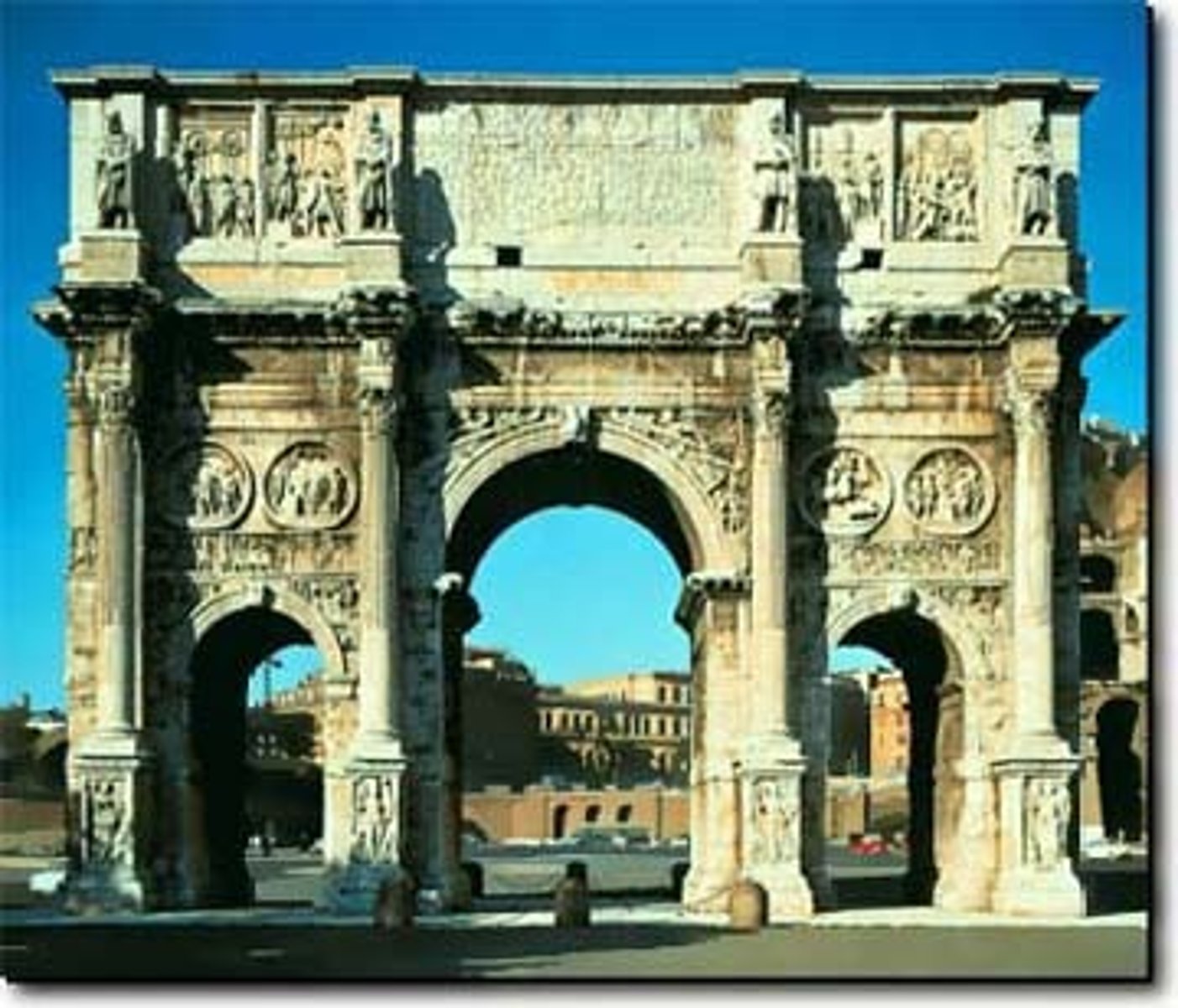Art history (UNIT 9 - Etruscan and Roman Republican Art)
1/27
There's no tags or description
Looks like no tags are added yet.
Name | Mastery | Learn | Test | Matching | Spaced |
|---|
No study sessions yet.
28 Terms
ad locutio / orator's pose
latin word for "an address given by an emperor/general". The stance itself is famed for emboying control, power, and leadership. Is a contrapposto pose with one arm pointing up foward, as if the user is giving a direct order.
verism
A style of portraiture that attempts to depict a truthful likeness of an individual.
Pompeii and Herculaneum
Roman cities near Mount Vesuvius, that were destroyed by the eruption of the volcano in 79 AD
atrium
The central room of a Roman house
mosaic
a pattern or image made of small regular or irregular pieces of colored stone, glass or ceramic, held in place by plaster/mortar, and covering a surface.
Augustus
Augustus (real name Gaius Julius Caesar Augustus) was the founder of the roman empire.
Tetrarchy
a governing system created by roman emperor Diocletian in 293 AD. This system divided the roman empire among four rulers. It was created to manage the large empire for effectively.
triumphal arch
a free standing monumental structure in the shape of an archway with one or more arched passageways. They represented military victory, power, and the greatness of the romans.
concrete
opus caementicium used as concrete in ancient rome. they used it to build temples, bridges, etc
oculus
a round eye like opening, typically at the top of a dome or in wall, its purpose it to mostly let light in a builiding, but also air.
drillwork
the use of drills to creqte intiricte carvings, details, and depth in marble, stone, and other materials. this allowed sculpting to have much more detail.
Constantine
roman emperor from AD 306 to 337. He issued the edict of milan, which allowed the tolerance of christians in the roman empire. Constantine converted to christianity himself on his deathbed in 337 AD.
Master Sculptor Vulca Apollo.
Italy, 500 BCE, painted terra cotta, Etruscan.
To demonstrate the prosperity of the Veii area in the face of increasing Roman dominance
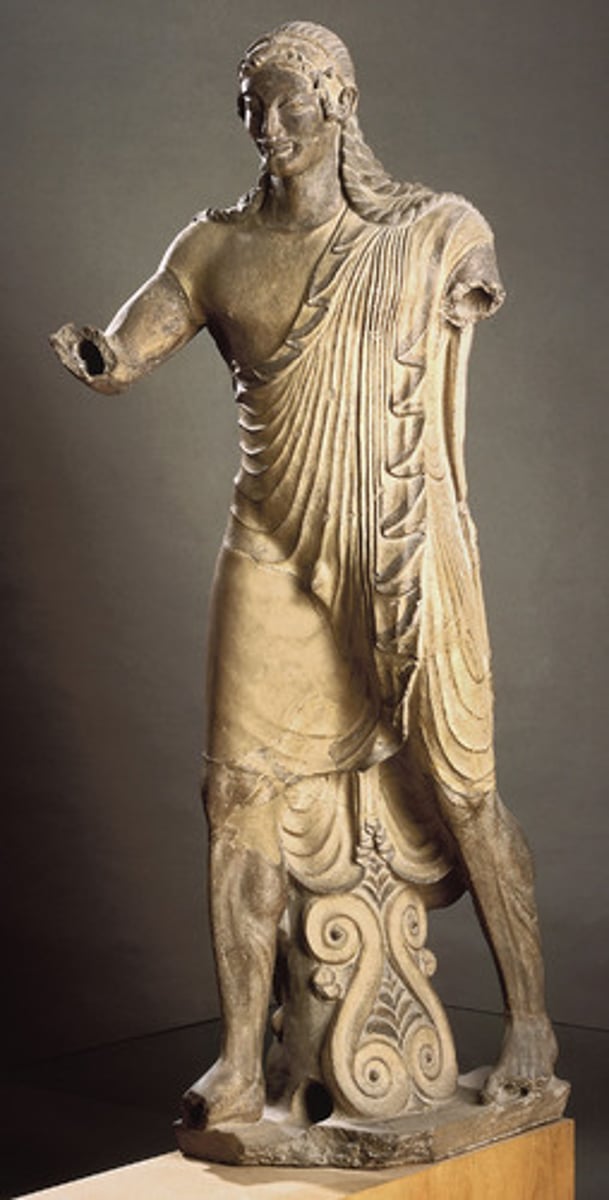
Burial Chamber, Tomb of the Reliefs
Italy, 300 BCE, terra cotta relief, Etruscan.
used as a place of burial, but also for prayer.

Reclining Couple on a Sarcophagus
Italy, 520 BCE, terra cotta, Etruscan
it represents a banquet scene, emphasizes the importance of family and relationships, and reflects the Etruscans' belief in a convivial afterlife
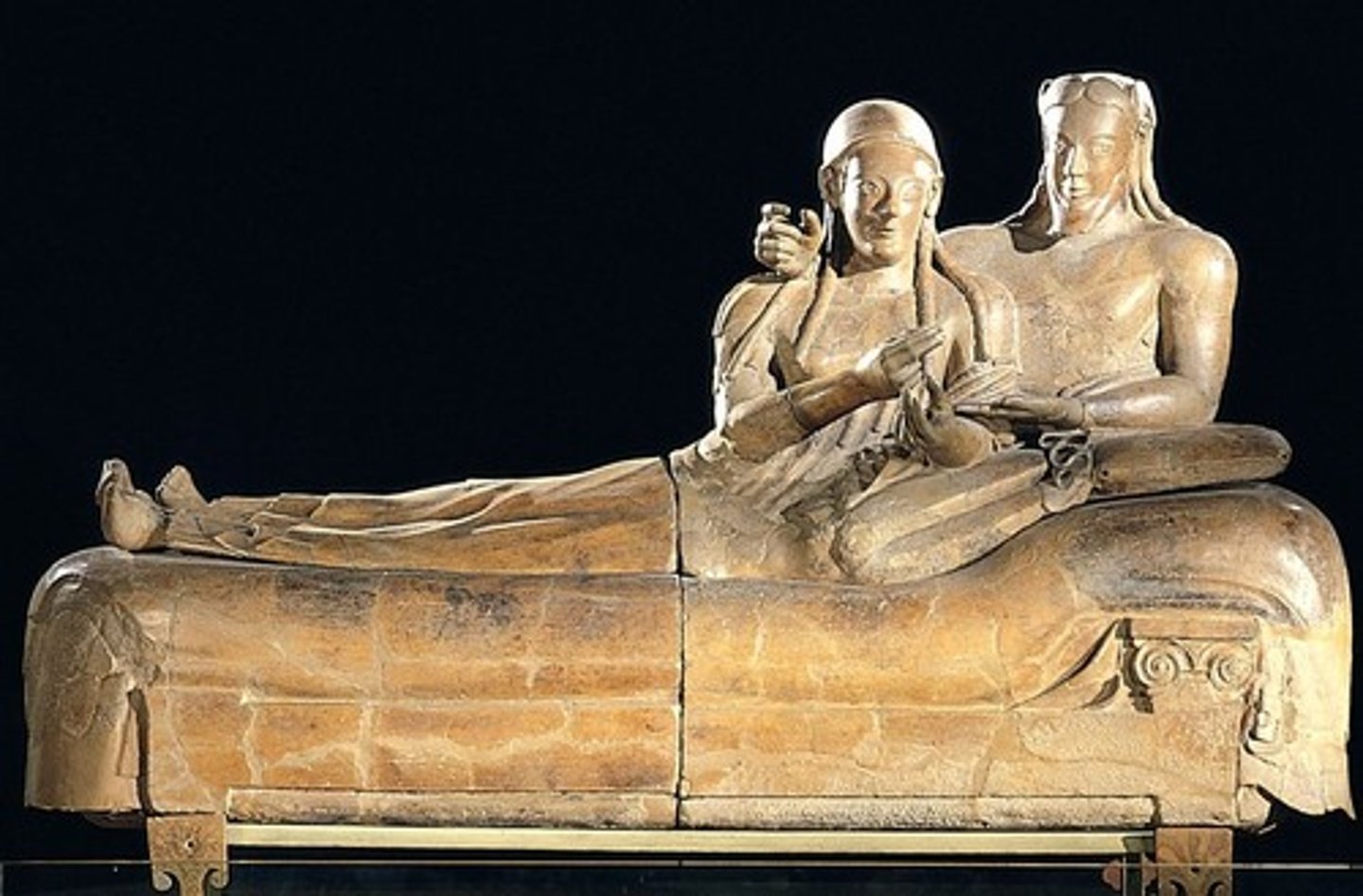
Aulus Metellus
Italy, 80 BCE, bronze, Republican Rome
The image, status, and stature of the magistrate in the course of performing the duties of his office commands respect.

Patrician Carrying Portrait Busts
Rome, 50 BCE, marble, Republican Rome
around the first-century AD that depicts a full-body figure, referred to as a togatus, holding the heads of deceased ancestors in either hand.
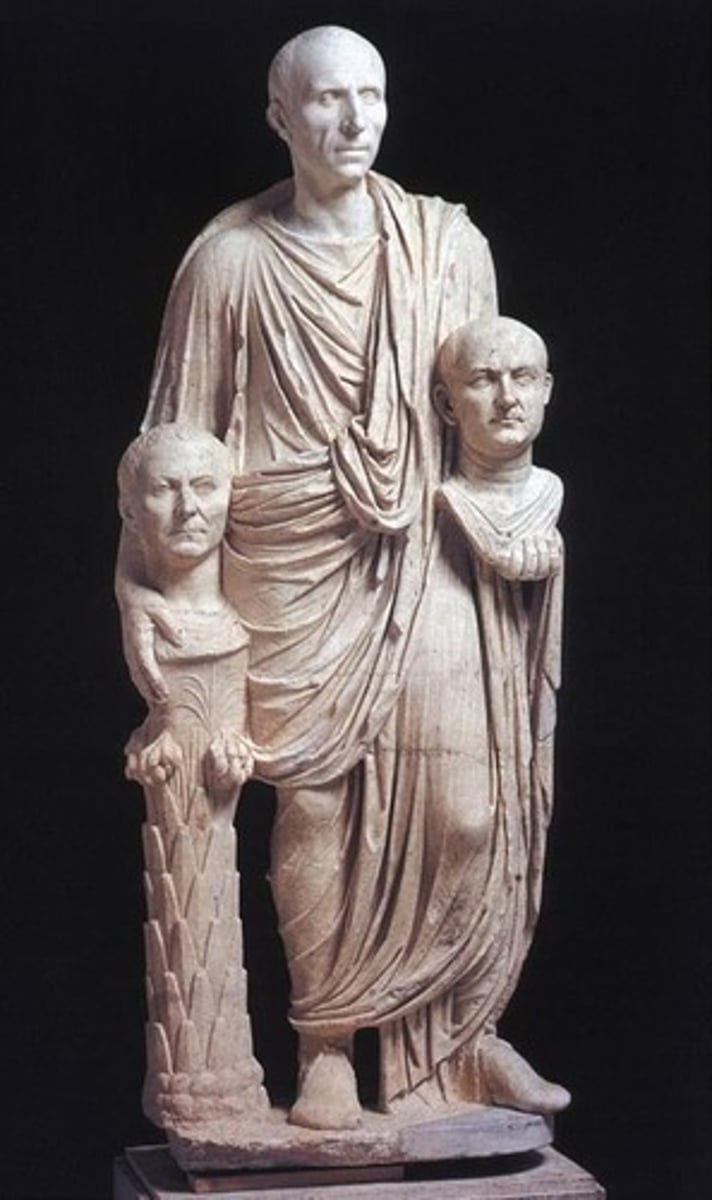
Temple of Portunus.
Rome, 200 BCE, Republican Rome
one of the best-preserved examples of Roman Republican architecture, offering a unique glimpse into ancient Rome's built environment

Pont du Gard
France, 100 BCE, Republican Rome
a masterpiece of ancient architecture and one of the best preserved Roman remains in the world

Augustus of Primaporta
Rome, 20 BCE, marble, Republican Rome
is a powerful piece of imperial propaganda that celebrates the Roman emperor Augustus's military victories, his divine lineage, and the Pax Romana (Roman Peace) he ushered in.

House of the Vettii Peristyle Garden.
Italy, 79 CE, Imperial Rome
a symbol of wealth and status, intended to display the prosperity of the Vetti

Colosseum
Rome, 80 CE, Imperial Rome
an entertainment venue, hosting gladiator fights, animal hunts, and even mock naval battles.

Arch of Titus
Rome, 81 CE, concrete and white marble, Imperial Rome
commemorates the Roman triumph awarded to Emperor Vespasian and to Titus, his son and heir, for their victory in the Jewish War
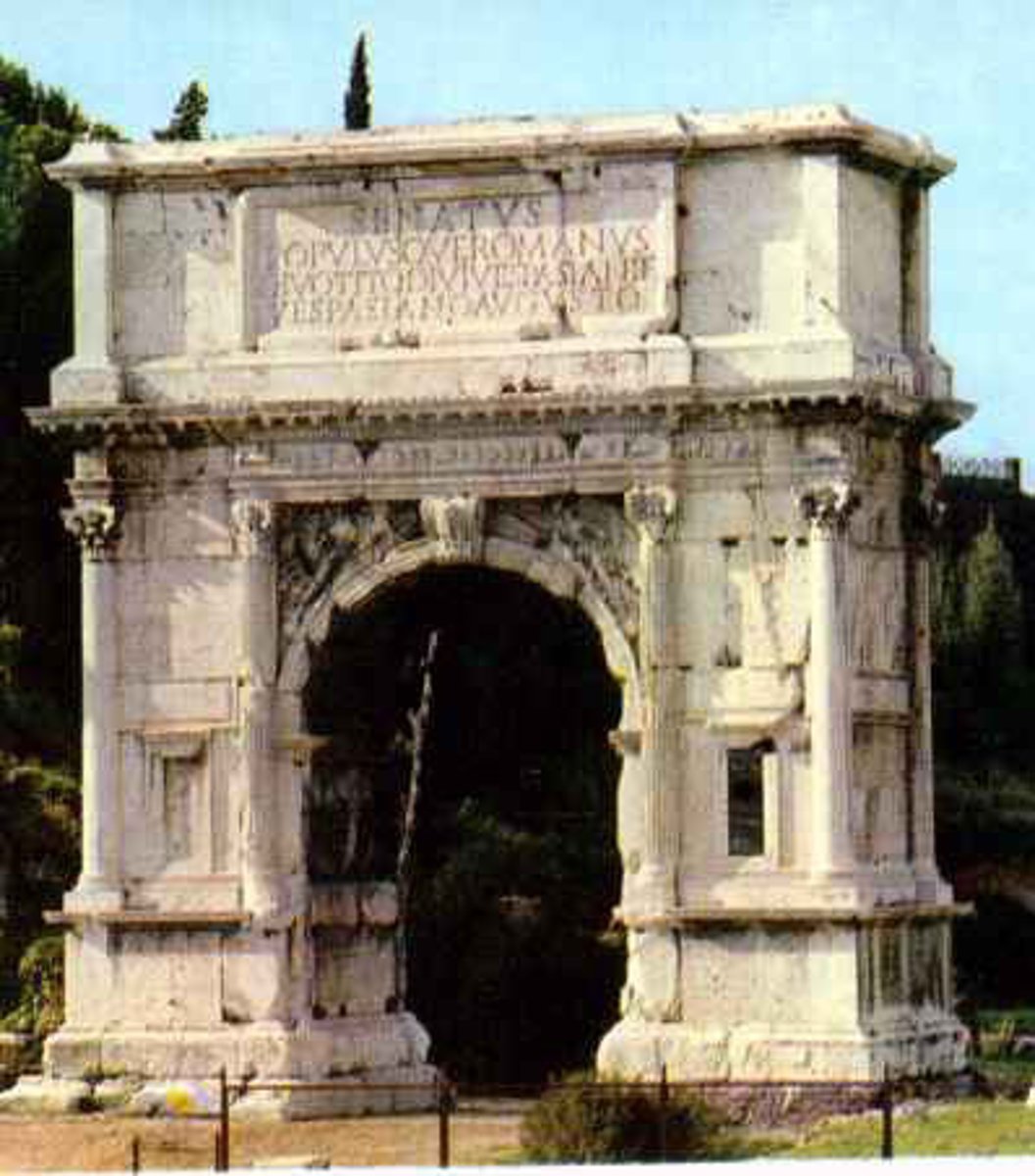
Column of Trajan
Rome, 117 CE, marble, Imperial Rome
commemorates Roman emperor Trajan's victory in the Dacian Wars.

Pantheon
Rome, 128 CE, Imperial Rome
translate to: a temple dedicated to all the gods; also : the gods of a people
a temple dedicated to the twelve Gods and to the living Sovran
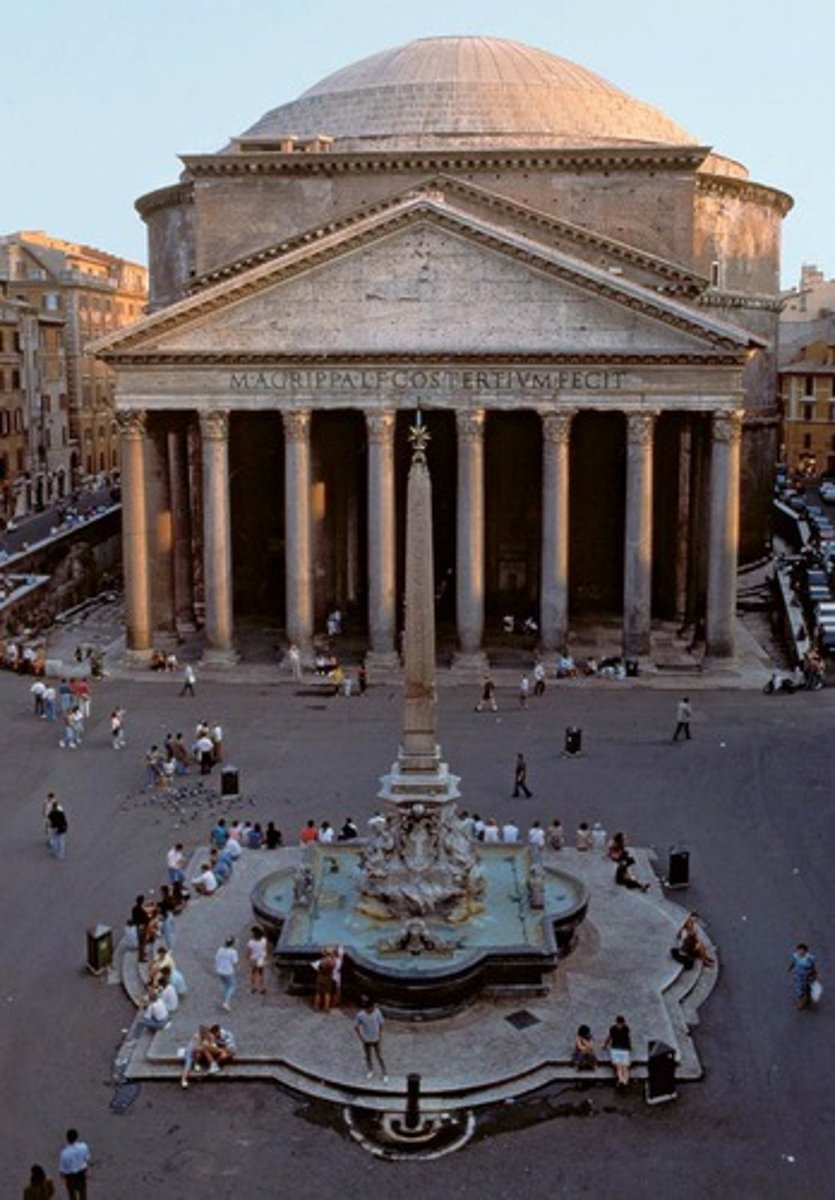
Marcus Aurelius
Rome, 176 CE, bronze, Imperial Rome
portray the emperor as victorious and all-conquering. However, shown without weapons or armour, Marcus Aurelius seems to be a bringer of peace rather than a military hero
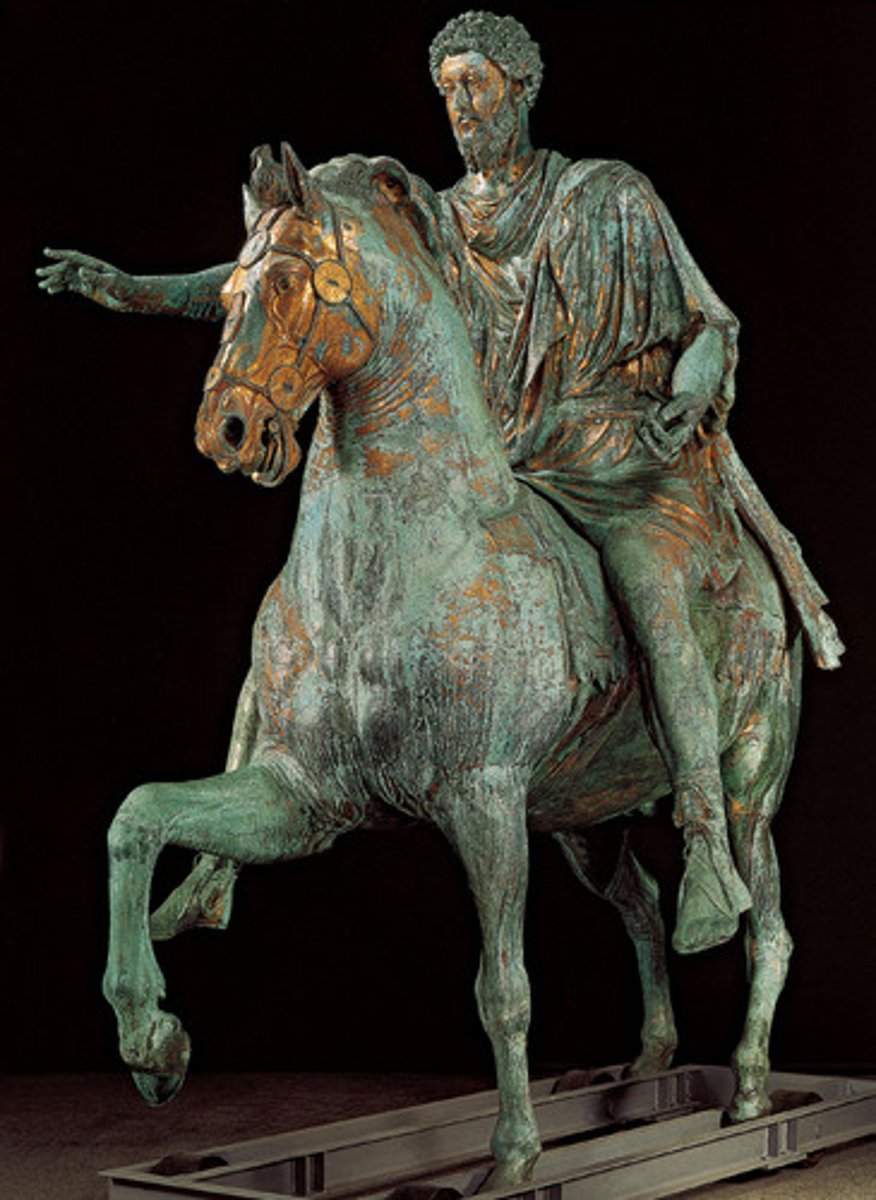
The Tetrarchs
the four co-emperors of the Roman Empire instituted by the Emperor Diocletian
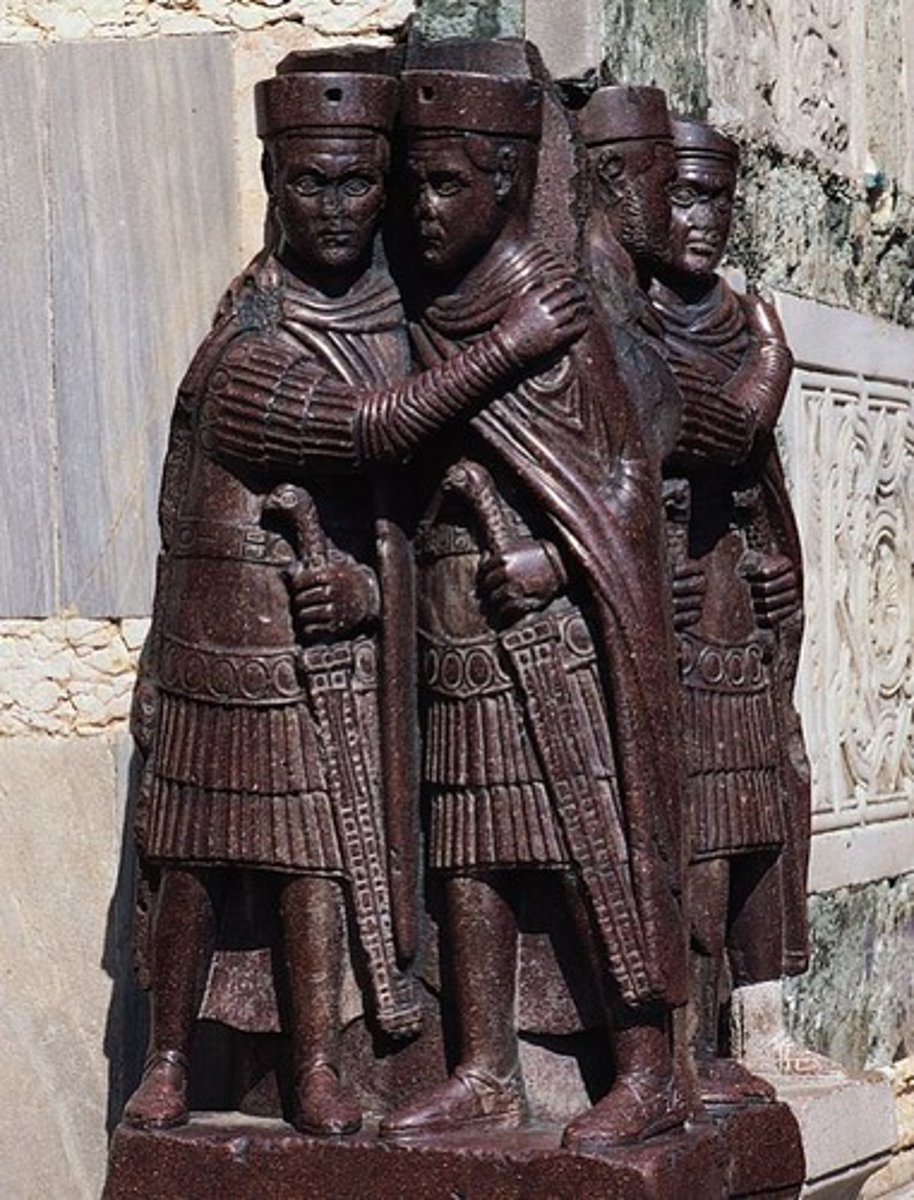
Arch of Constantine
Rome, 315 CE, marble, Imperial Rome
dedicated to Constantine the great.
